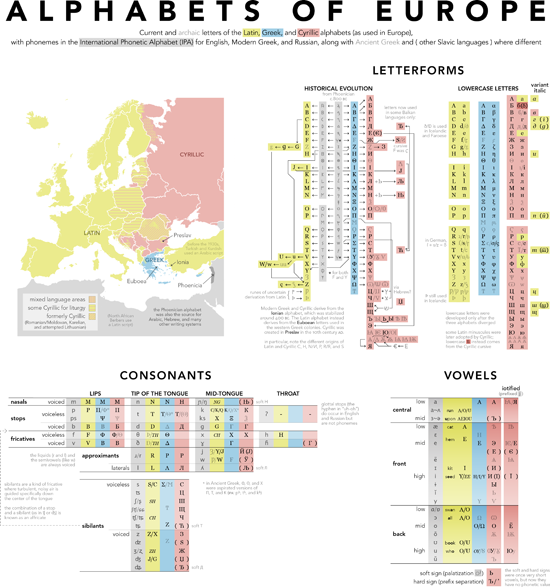
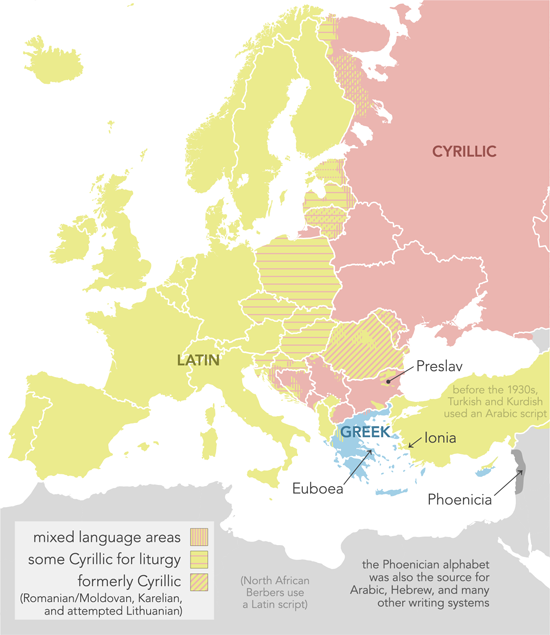
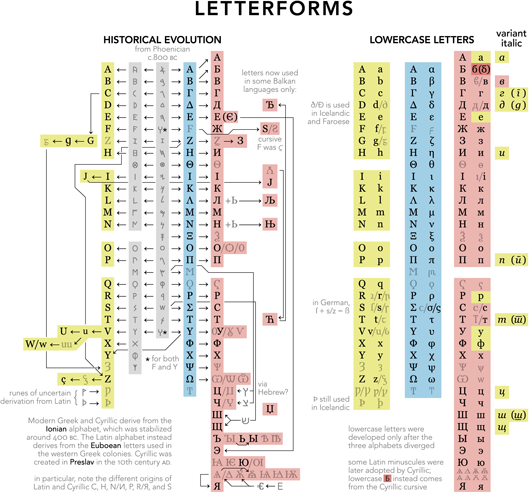
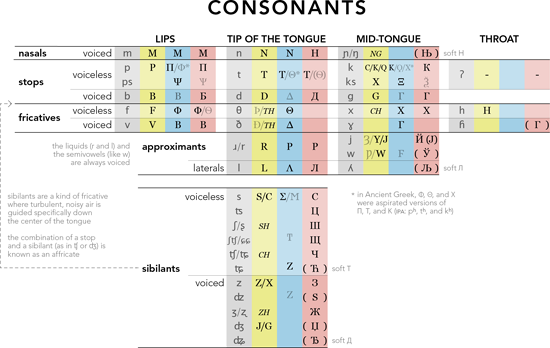
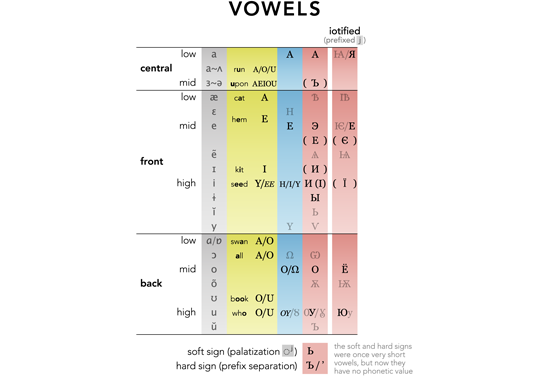
Bill Rankin, 2013
download:
.PNG (4200x4200, 1.1 MB)
A relatively simple exercise, but I like how cleanly this map shows Greece as the hinge between eastern and western Europe, at least alphabetically, especially before the conversion of Romanian and Turkish to a Latin script.
The phonetic and historical diagrams also show how the Greco-Roman alphabets aren't necessarily a good match with the sound systems of other European languages. The monks who made Cyrillic had to add five letters for sibilants (like SH and CH) and nearly a dozen vowel and vowel-related sounds; another set of symbols covers the palatalized "soft" consonants. And despite learning in grade school that English has five vowels — A, E, I, O, U — this is really only true of Greek and Latin. Most varieties of English have at least ten; some even have a few more.
I also like how the north/south line from the Arctic Ocean to the Black Sea conjures the massive triangulation survey of the 30th meridian. Obviously the two are unrelated, but both recenter Europe quite a bit further east than the more familiar dividing line of the Cold War.
I might also admit a certain fondness for the variety of now-obsolete vowel glyphs in Old Church Slavonic — "little yus," "big yus," and "blended yus," all in several flavors:

